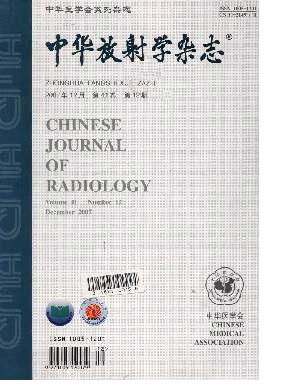[X-ray diagnosis of multiple epiphyseal dysplasia (a report of 3 cases from the same family)].
Q4 Medicine
Zhonghua fang she xue za zhi Chinese journal of radiology
Pub Date : 1989-02-01
引用次数: 0
Abstract
This is a case report of 3 cases from the same family with multiple epiphyseal dysplasia. The disease is an uncommon congenital dominant hereditary disease of the bone characterized by multiple and symmetrical skeletal involvement with retardation of epiphyseal development, accompanied by irregularity and shortening of toes and fingers and yet still maintaining the normal proportion between the trunk and extremities. The intelligence is not affected. In the adult patients, sloping of distal tibial articular surface associated with degenerative changes of both hip joints is a reliable diagnostic sign. The aforementioned X-ray signs are helpful to distinguish this condition from other chondrodysplasia diseases.
【多发性骨骺发育不良的x线诊断(附同科3例报告)】。
本文报告来自同一家族的3例多发性骨骺发育不良。此病是一种罕见的先天性显性遗传性骨骼疾病,其特征是骨骼多处对称受累,骨骺发育迟缓,伴有脚趾和手指的不规则和缩短,但躯干和四肢之间仍保持正常比例。智力不受影响。在成年患者中,与双髋关节退行性改变相关的胫骨远端关节面倾斜是一个可靠的诊断标志。上述x线征象有助于将这种情况与其他软骨发育不良疾病区分开来。
本文章由计算机程序翻译,如有差异,请以英文原文为准。
求助全文
约1分钟内获得全文
求助全文
来源期刊

Zhonghua fang she xue za zhi Chinese journal of radiology
Medicine-Radiology, Nuclear Medicine and Imaging
CiteScore
0.30
自引率
0.00%
发文量
10639
 求助内容:
求助内容: 应助结果提醒方式:
应助结果提醒方式:


